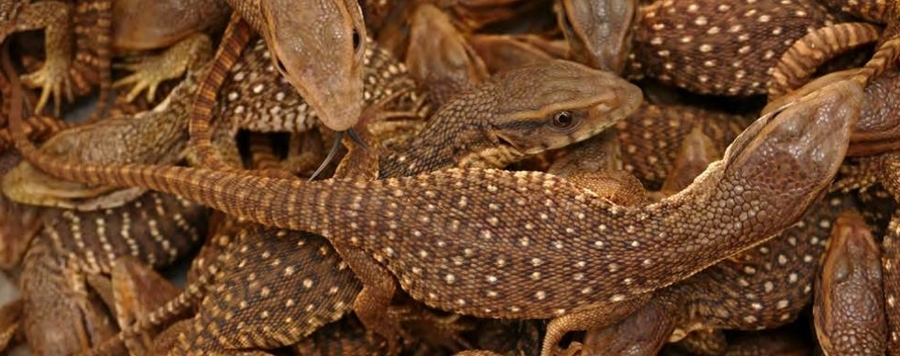
Identification Guide to the Monitor Lizards of the World
Germany and the member states of the European Union (EU) are among the most important importers of living reptiles and their parts and products (e.g. leather) worldwide. In addition, Germany is a central transit country in the EU reptile trade and thus bears a great responsibility for the conservation of the traded species in their countries of distribution.
Among reptiles, monitor lizards (Varanidae) are particularly relevant for international trade, which is regulated by the Convention on International Trade in Endangered Species of Wild Fauna and Flora (CITES). To date, 82 species of monitor lizards are scientifically described, which vary much in relevance for trade and differ in conservation and protection status (CITES Appendix I or II). Many of these taxa have been described only recently as distinct species based on genetic divergences. The increasing numbers of newly descripted cryptic (morphologically similar to identic) monitor lizard species in different species complexes pose an increasing challenge to management authorities regarding proper species identification. However, the accurate identification of species is crucial for the proper implementation of the CITES convention and the conservation of monitors lizards






